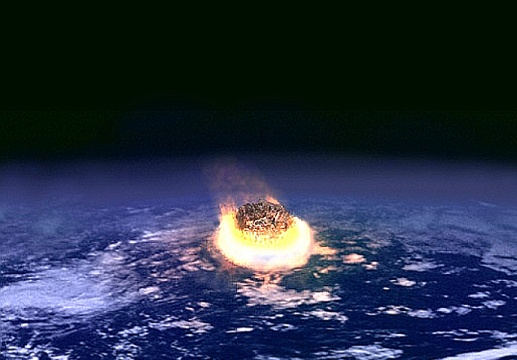Special delivery! See our visiting baby camels (Dec. 6–19) and yaks (Dec. 20–Jan. 5) this holiday. Learn more
Science News
Pinpointing Date of Impact
February 8, 2013

“We have shown that these events are synchronous to within a gnat’s eyebrow, and therefore the impact clearly played a major role in extinctions, but it probably wasn’t just the impact.” That’s Paul Renne, a scientist at UC Berkeley’s Geochronology Center, describing the impact that created the Chicxulub crater AND caused the non-avian dinosaur extinction 66 million years ago.
If geochronology is “the science of determining the ages of earth materials” (according to the center’s website), then Renne must know his gnat’s eyebrow. For those of us lay-folk, it’s about 5,000 years.
Renne and his colleagues have a new paper in Science pinpointing the dates of both the impact and the dinosaur extinction, placing them within the same time of each other—providing evidence, once again, for an asteroid or comet impact being the cause of extinction.
The 110 mile-wide Chicxulub (cheek’-she-loob) crater, off the Yucatan coast of Mexico, is likely the result of a six-mile in diameter asteroid or comet. Using and refining a technique called argon-argon dating, the scientists determined that the impact occurred 66,038,000 years ago, plus or minus 11,000 years.
The same argon-argon dating put the dinosaur extinction at 66,043,000 years ago, with the same margin of error.
The first link between the impact event and dinosaur extinction was published in 1980 by UC Berkeley’s Luis and Walter Alvarez. Since then, many other scientists have supported or refuted the theory, sometimes putting the extinction several hundred thousand years before the impact.
“When I got started in the field, the error bars on these events were plus or minus a million years,” says UC Berkeley paleontologist William Clemens. “It’s an exciting time right now, a lot of which we can attribute to the work that Paul and his colleagues are doing in refining the precision of the time scale with which we work.”
Despite the synchronous impact and extinction, Renne cautions that the impact was not the sole cause of extinction. Dramatic climate variation over the previous million years, including long cold snaps amidst a general Cretaceous hothouse environment, probably brought many creatures to the brink of extinction, and the impact kicked them over the edge.
“These precursory phenomena made the global ecosystem much more sensitive to even relatively small triggers, so that what otherwise might have been a fairly minor effect shifted the ecosystem into a new state,” Renne says. “The impact was the coup de grace.”